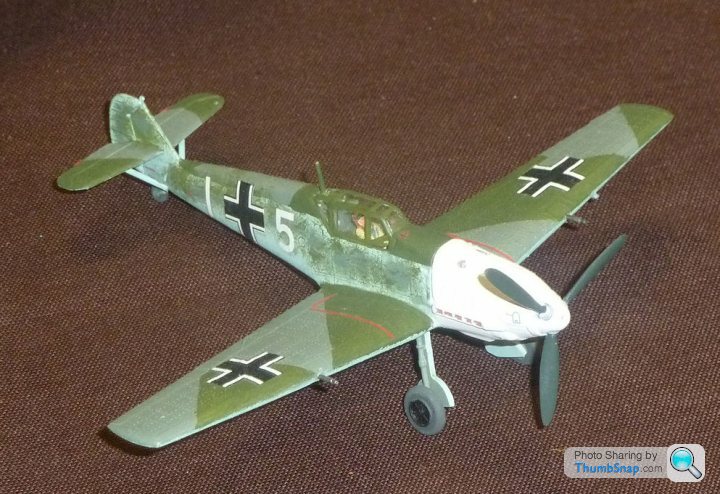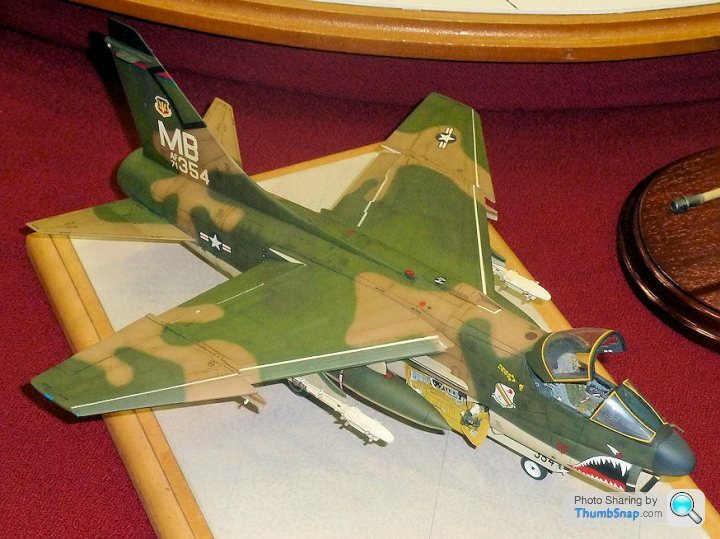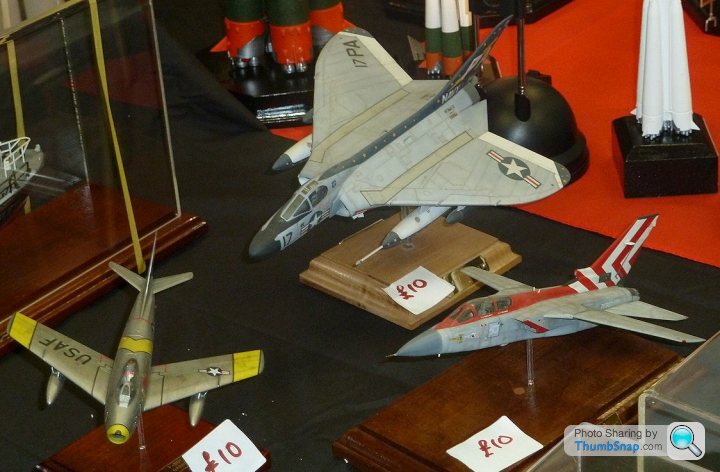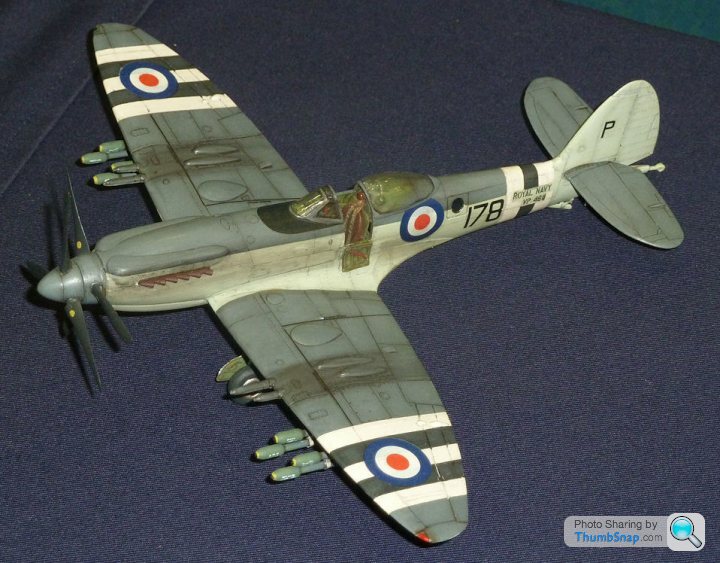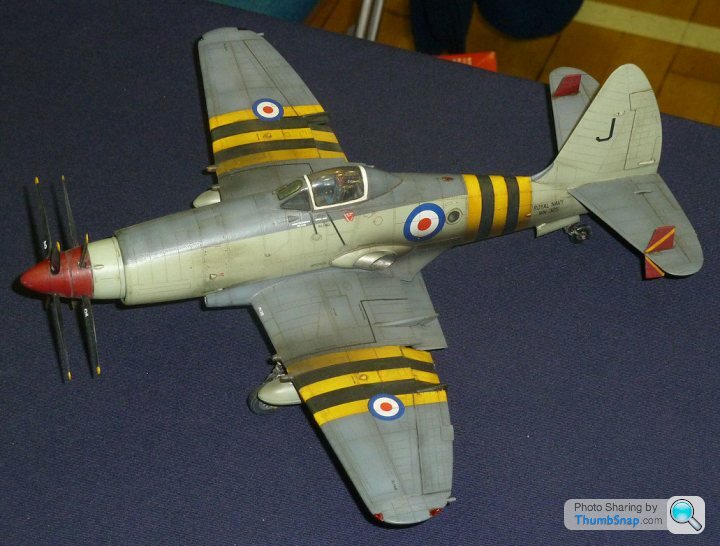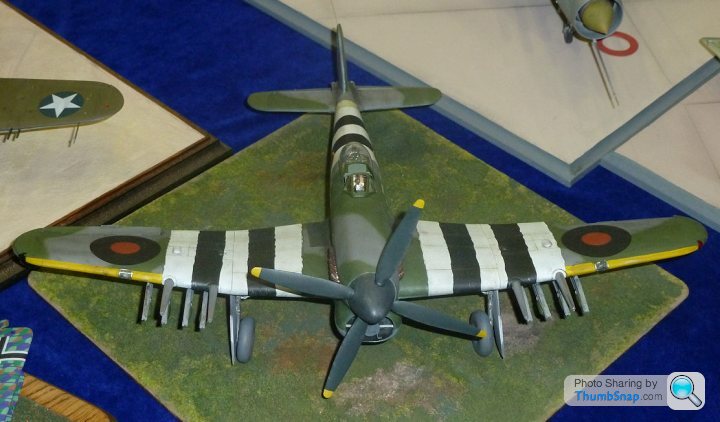Crewe Model Show 27th Feb 2011
Discussion
Shar2 said:
Supermarine Seafire FR-47 with the next contra-prop being a Westland Wyvern.
Thanks Eric. Out of curiosity what was the benefit of having a contraprop? From my (very limited knowledge of fluid dynamics from a long time ago) wouldn't the inner prop have been running through dirty air and as such not that effective?Edited by Shar2 on Thursday 3rd March 10:41
Driving_me _nuts amongst other aerodynamic doodahs contrarotating props on the Spitfire airframe helped stop the wild torque steer effect of the huge engine power acting on the aircraft at take off
Not much fun having a tailwheel aircraft that wants to fling itself off the edge of the deck on a tiny wartime carrier on full take-off power
ISTR that the dirty air question does have some effect but far less disadvantageously than losing it over the side
edit 'cos I was too stupid to see who I was chatting with

Not much fun having a tailwheel aircraft that wants to fling itself off the edge of the deck on a tiny wartime carrier on full take-off power
ISTR that the dirty air question does have some effect but far less disadvantageously than losing it over the side

edit 'cos I was too stupid to see who I was chatting with

Edited by perdu on Thursday 3rd March 17:27
As Perdu says, the swing of the 2,000 hp Griffon made these late mark Spitfires/Seafires a real handfull - especially on take off. The RAF settled for the standrd 5 blade prop but the Navy went for a contra-prop to try and alleviate the swing which was a real problem on smalll Royal Navy carriers.
Contra props were also used on the Wyvern and Gannet for the same reason.
Contra props were also used on the Wyvern and Gannet for the same reason.
... so is it fair to say that a prop driven plane would have a natural tendancy to prefer to turn one way more than the other? How would the designers have compensated for this natural tendancy in their design... I guess what i'm asking in very basic terms is which part of the plane prevents/reduces this torque twisting effect?
The contraprop on the Seafire 47's not only negated swing, but allowed the use of shorter blades, which in the case of tail draggers reduced the prospect of tip strike when taking off and landing.
With the large amounts of torque on the later piston fighters that Eric mentioned I would imagine you'd need quite a large rudder/fin or rudder authority to counter it. IIRC Spitfires needed a good bootful of rudder to keep them straight on take-off. Don't konw which went which way, but I believe the Merlin prop rotated in one direction whilst the Griffon prop rotated in the opposite direction.
With the large amounts of torque on the later piston fighters that Eric mentioned I would imagine you'd need quite a large rudder/fin or rudder authority to counter it. IIRC Spitfires needed a good bootful of rudder to keep them straight on take-off. Don't konw which went which way, but I believe the Merlin prop rotated in one direction whilst the Griffon prop rotated in the opposite direction.
It's not just torque that's the issue, it's the gyroscopic effect of a huge prop tending to yaw the aircraft when the tail lifts on take off.
The torque effect was used to good effect in aircraft like the Sopwith Camel, which made rolls in one direction much faster than in the other.
The torque effect was used to good effect in aircraft like the Sopwith Camel, which made rolls in one direction much faster than in the other.
drivin_me_nuts said:
.. so on larger multi engined planes were these effects less pronounced? Would it be fair to say the mass of something like a fully ladended bomber would have negated the twisting effects of these very large engines?
I'd imagine size of the aircraft was a factor on reducing torque and gyroscopic effects. Some twin engined aircraft had handed engines/props to stop the effect. Gassing Station | Scale Models | Top of Page | What's New | My Stuff




